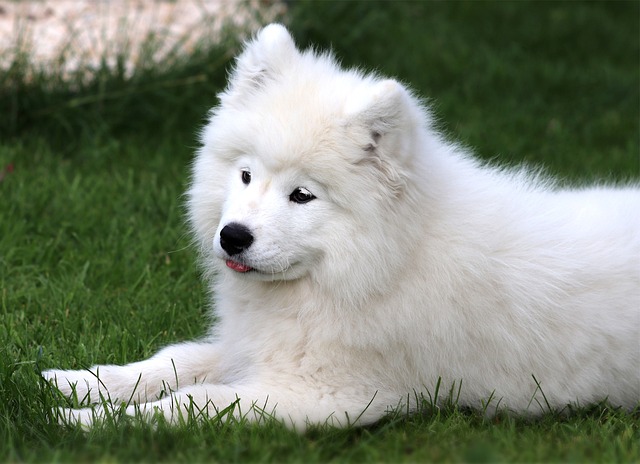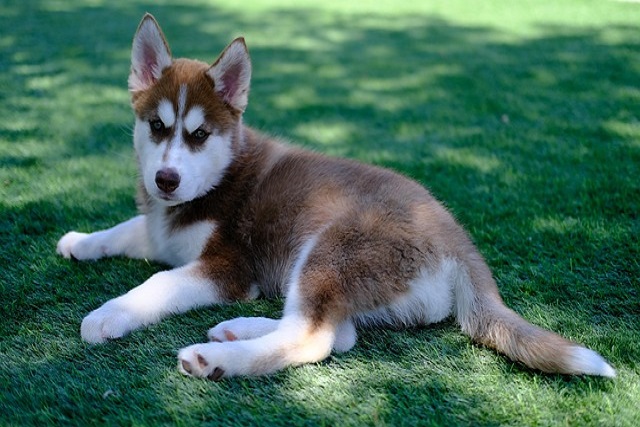
Should I clean my dog’s ears if he has ear mites
If you’re a new dog parent in the US—maybe you just brought home a fluffy Shih Tzu puppy from a shelter in California or a playful Dachshund from a breeder in Michigan
Let’s be real—living with these fluffy little tornadoes means your black leggings will never be fur-free. But that iconic corgi coat? It’s part of their magic. The key is managing shedding without losing the joy of those fuzzy snuggles. From cozy evenings on the couch to sunny park adventures, let’s explore gentle, effective ways to keep fur flying less and fun flying more. Think of this as a love letter to your pup’s coat—with practical tips that work for real life.
Your corgi’s diet is the first line of defense against excessive shedding. Those dense double coats need specific nutrients to stay strong and healthy. Look for high-quality kibble with real meat as the first ingredient, avoiding fillers like corn or soy that can trigger inflammation. Omega-3 fatty acids, found in wild-caught fish oil or krill supplements, are absolute superstars—they nourish the skin barrier, reduce flakiness, and make fur glossy. Just remember: always check with your vet before adding supplements, especially if your pup has existing health conditions. Hydration matters too! A dehydrated corgi is more likely to have dry, irritated skin that sheds excessively. Keep their water bowl fresh and accessible—pro tip: add a splash of unsalted bone broth to encourage sipping. It’s a small touch that shows you’re tuned into their needs, and hydrated skin means less itchiness and flaking.
Brushing your corgi isn’t just a chore—it’s quality time. Those double coats require daily attention, especially during shedding seasons when they “blow” their undercoat. Invest in a gentle slicker brush and a de-shedding tool designed for dense fur, like a FURminator (used properly, never over-brushed to avoid skin damage). Brush in the direction of hair growth, taking care around sensitive areas like the belly and armpits. Many corgis lean into this ritual—think of it as their daily spa treatment! When bath time rolls around, choose a pH-balanced dog shampoo without harsh chemicals. Skip the human products—our soaps disrupt their skin’s natural oils, leading to more shedding. Lukewarm water, gentle massages, and thorough rinsing are key. Bonus: towel-dry instead of rubbing to minimize static and breakage. Your pup will smell amazing, and you’ll notice less fur floating in the air afterward.
 Excessive shedding can signal underlying issues. Keep an eye on changes—patchy fur, redness, or constant scratching might point to allergies, thyroid imbalances, or infections. In regions with strict pet health regulations, like the EU, always opt for vet-approved parasite preventatives. Regular wellness visits aren’t just for vaccines—they’re a chance to catch problems early. Your vet might suggest a food trial for allergies or a blood test to check hormone levels. Parasites are public enemy number one for coat health. Flea and tick preventatives come in many forms—topicals, chews, collars—but choose based on your lifestyle. Rural areas might need stronger tick protection, while city pups could focus on flea prevention. Always follow dosage instructions carefully; over-the-counter products vary in efficacy, and safety should never be compromised.
Excessive shedding can signal underlying issues. Keep an eye on changes—patchy fur, redness, or constant scratching might point to allergies, thyroid imbalances, or infections. In regions with strict pet health regulations, like the EU, always opt for vet-approved parasite preventatives. Regular wellness visits aren’t just for vaccines—they’re a chance to catch problems early. Your vet might suggest a food trial for allergies or a blood test to check hormone levels. Parasites are public enemy number one for coat health. Flea and tick preventatives come in many forms—topicals, chews, collars—but choose based on your lifestyle. Rural areas might need stronger tick protection, while city pups could focus on flea prevention. Always follow dosage instructions carefully; over-the-counter products vary in efficacy, and safety should never be compromised.
Your home’s climate affects how much your corgi sheds. Dry air sucks moisture from their skin, so a humidifier in winter can work wonders. In summer, keep temps comfy—corgis are prone to overheating, and stress from heat leads to more fur loss. Create a cool retreat with a raised bed or ceramic tile where they can lounge. For furniture, choose pet-friendly fabrics like microfiber or leather that fur doesn’t cling to—your vacuum will thank you, and your pup will love the cozy spots you’ve curated for them. Anxiety is another silent shed trigger. Moving homes, loud noises, or long alone times can spike stress hormones. Combat this with routine: regular walk times, puzzle feeders to keep their minds busy, and a cozy den where they feel safe. Some owners swear by pheromone diffusers or natural calming treats with L-tryptophan—always check with your vet first, especially if your pup is on other medications. A relaxed corgi is a happy corgi, and happy pups shed less.
Never shave your corgi! That double layer insulates them in winter and protects from sunburn in summer. Shaving disrupts temperature regulation and can cause permanent texture changes. Instead, opt for a “tidy trim” around the paws, the belly, and the backside. If DIY trims make you nervous, find a groomer experienced with double-coated breeds—ask for references or check reviews to ensure they use gentle techniques and sharp tools. A good groomer will also alert you to any skin issues they spot during the process.
Let’s be honest—corgis will always shed a little. The goal isn’t perfection; it’s balance. Celebrate progress, like a week where you only find three fur balls on the pillow instead of ten. Remember, every brush stroke is a chance to connect, every healthy meal is a vote for their well-being, and every vet visit is an act of love. This isn’t just about managing fur—it’s about creating a life where your corgi thrives, inside and out. So go ahead, laugh when they shake and a cloud of fur appears. With consistent care, their coat will be a source of pride, not frustration. After all, those soft ears, wiggly butts, and soulful eyes? Worth every single strand. Now go give your fluffy hero a treat—they’ve earned it for being the best sidekick ever.

If you’re a new dog parent in the US—maybe you just brought home a fluffy Shih Tzu puppy from a shelter in California or a playful Dachshund from a breeder in Michigan

If you’re a new dog parent in the US—maybe you just brought home a wiggly Beagle puppy from a shelter in California or a cuddly Pug from a breeder in Pennsylvania

If you’re a new dog parent in the US—maybe you just brought home a fluffy Golden Retriever puppy from a shelter in Colorado or a snuggly French Bulldog from

Many dog owners notice their pups begging for extra treats or lingering by the food bowl long after meals, which can lead to unhealthy weight gain over time.

If you're considering giving your double-coated dog a summer buzz cut for their comfort, you might be surprised to learn that this is one of the most counterproductive

If you’re a new dog parent in the US—maybe you just brought home a fluffy Golden Retriever puppy with a wagging tail or a calm Shih Tzu with cascading fur